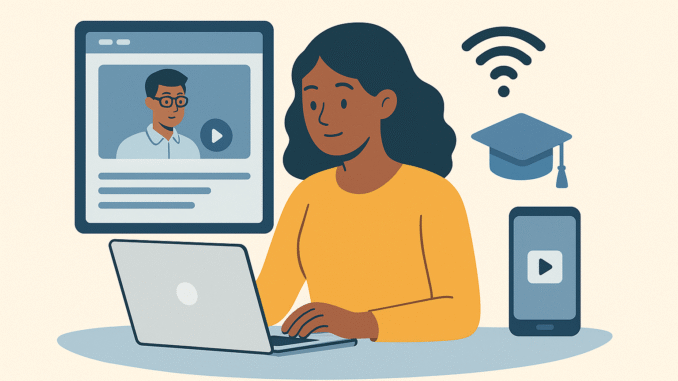
How Technology Is Transforming Modern Education: A Complete Guide
Education has always been the foundation of human progress, but in the 21st century, technology is revolutionizing the way we learn, teach, and interact with knowledge. From classrooms equipped with smart boards to online learning platforms that connect students across the globe, technology is redefining modern education. In this guide, we will explore how technology is transforming education, its benefits, challenges, and the innovations that are shaping the future of learning.
The Role of Technology in Modern Education
Technology is no longer just a supporting tool in education—it has become an essential part of the learning process. Schools, universities, and training institutes are integrating technology to improve efficiency, enhance accessibility, and create more personalized learning experiences. This shift is not only making education more interactive but also preparing students for a technology-driven world.
1. Online Learning Platforms
The rise of online learning platforms such as Coursera, Udemy, Khan Academy, and edX has democratized education. In modern education, learners are no longer restricted by geographical boundaries or traditional classroom schedules. Online platforms provide flexible, affordable, and high-quality courses on a wide range of topics. Students can now earn certifications, degrees, and skills from the comfort of their homes.
2. Smart Classrooms and Interactive Learning
Traditional blackboards are being replaced by smart boards and digital projectors. Interactive lessons, multimedia presentations, and real-time collaboration tools are making classrooms more engaging. In 2025, many schools are adopting smart classroom technologies where teachers use cloud-based tools to share resources, track student progress, and encourage active participation.
3. Artificial Intelligence (AI) in Education
AI is playing a crucial role in personalizing education. Adaptive learning systems powered by AI analyze student performance and recommend customized learning paths. AI-driven chatbots assist learners with questions, provide instant feedback, and help teachers with administrative tasks. Moreover, AI can predict student challenges and suggest interventions to prevent academic struggles.
4. Virtual and Augmented Reality (VR/AR)
One of the most exciting technological advancements in education is the use of Virtual Reality (VR) and Augmented Reality (AR). These technologies enable immersive learning experiences, allowing students to explore complex concepts in an interactive way. For instance, medical students can practice surgeries in virtual environments, while history students can take virtual tours of ancient civilizations. VR and AR bridge the gap between theory and practice, making learning more effective.
5. Mobile Learning
Smartphones and tablets have become powerful learning tools. With mobile apps, students can access educational content anytime, anywhere. Mobile learning is especially beneficial for learners in remote areas who may not have access to traditional educational resources. Educational apps, podcasts, and e-books are making learning more convenient and accessible.
6. Cloud-Based Education
Cloud technology is transforming how educational institutions store, manage, and share data. Cloud-based platforms allow students and teachers to collaborate in real-time, access resources from anywhere, and store large volumes of data securely. This reduces costs for schools and improves efficiency. Students can now access assignments, notes, and lectures online, eliminating the need for heavy textbooks.
7. Gamification of Learning
Gamification integrates game-like elements such as points, badges, and leaderboards into the learning process. By turning lessons into interactive challenges, gamification increases student engagement and motivation. Many subjects, including math, science, and languages, are being taught through gamified apps and online platforms. This approach encourages students to learn while having fun, making difficult topics more enjoyable.
8. E-Libraries and Digital Resources
E-libraries and online resources are replacing traditional libraries. Students can now access thousands of books, journals, and research papers online. Digital resources not only save time but also provide interactive features such as search tools, annotations, and multimedia content. With e-libraries, learners have a vast pool of knowledge at their fingertips.
9. Data Analytics for Education
Data analytics is providing valuable insights into student performance and learning behaviors. By analyzing test scores, attendance, and participation, educators can identify patterns and address weaknesses. Data-driven decision-making helps schools improve teaching methods, adjust curricula, and enhance student outcomes. Personalized learning plans based on data analytics ensure that every student receives the attention they need.
10. Lifelong Learning and Micro-Credentials
Technology has made lifelong learning more accessible than ever before. Professionals can now acquire new skills through short courses and micro-credentials. These digital certifications focus on specific competencies, helping learners stay competitive in a rapidly evolving job market. Online platforms offer flexible, career-oriented programs that empower individuals to continuously upgrade their knowledge.
Benefits of Technology in Education
The integration of technology into modern education has numerous advantages:
- Accessibility: Students can access learning materials anytime and anywhere.
- Personalization: Tailored learning experiences cater to different learning styles.
- Engagement: Interactive tools and gamification make learning more enjoyable.
- Efficiency: Technology reduces administrative burdens and saves time for educators.
- Collaboration: Digital platforms foster teamwork and global connections.
Challenges of Technology in Education
While technology has brought many benefits, it also presents challenges:
- Digital Divide: Not all students have equal access to devices and internet connectivity.
- Screen Dependency: Excessive screen time can affect health and well-being.
- Data Privacy: Protecting student information is a growing concern.
- Teacher Training: Educators need proper training to effectively use technology.
Addressing these challenges is essential to ensure that technology benefits all learners equally.
The Future of Technology in Education
The future of education will continue to be shaped by technological innovations. AI will become more advanced, VR/AR will become more mainstream, and hybrid learning models will dominate. Moreover, the focus will shift from traditional degrees to skill-based certifications, preparing students for real-world challenges. Sustainability, inclusivity, and global collaboration will also play key roles in shaping the educational landscape.
Conclusion
Technology is not just transforming modern education—it is revolutionizing it. From online learning platforms to AI-driven personalization, digital tools are making education more accessible, engaging, and effective. While challenges such as the digital divide remain, the opportunities are vast. As technology continues to advance, the future of education will be more interactive, inclusive, and aligned with the needs of a changing world.
